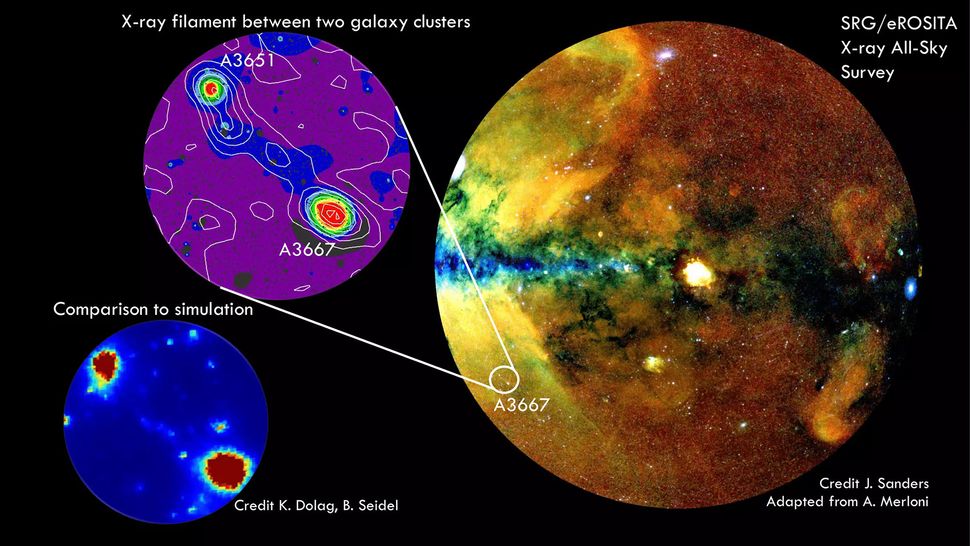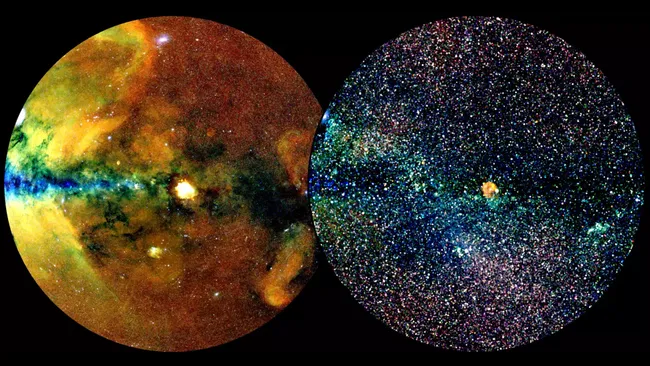The Universe’s Most Detailed X-ray Map Unveils Over 900,000 Stars, Galaxies, and Black Holes
Scientists using the eROSITA X-ray telescope have released a trove of data that reveals more than 900,000 objects in space, including 700,000 supermassive black holes and other ‘exotic’ objects.
The universe has been unveiled in its largest and most detailed X-ray map ever created by astronomers. This groundbreaking data release showcases over 700,000 monster black holes, a mysterious gas “bridge” connecting distant galaxies, and numerous other intriguing deep-space objects.
The eROSITA All-Sky Survey is responsible for this monumental X-ray data release. This mission utilized the eROSITA X-ray telescope to scan the entire sky from December 2019 to June 2020. During this period, the survey detected an astounding 170 million X-ray photons, which were later identified as approximately 900,000 distinct objects in space. The majority of these objects are supermassive black holes, as confirmed by the Max Planck Society in Germany, which played a crucial role in managing the mission.
Andrea Merloni, the eROSITA principal investigator and lead author of a new paper detailing the mission’s findings, expressed astonishment at the numbers achieved in X-ray astronomy. Merloni stated, “We’ve detected more sources in 6 months than the big flagship missions XMM-Newton and Chandra have done in nearly 25 years of operation.” This statement refers to the X-ray telescopes currently operated by the European Space Agency and NASA, respectively.
X-rays, a form of high-energy radiation invisible to the naked eye, play a vital role in understanding the cosmos. They originate from concentrations of extremely hot gases found in massive galaxy clusters, remnants of supernova explosions like the renowned Crab Nebula, and active black holes that can outshine entire galaxies. By studying cosmic X-rays, scientists can not only investigate these massive, high-energy objects but also gain insights into the fundamental structure of the universe itself.

An intriguing new discovery from the survey is a massive “filament” or bridge of hot gas that connects two clusters of galaxies over a distance of more than 42 million light-years, which is more than 400 times the length of the Milky Way. This filament is believed to be a part of the cosmic web, a vast superhighway of gas that nourishes all galaxies in the universe and exposes the empty voids where mysterious dark matter is thought to reside. It is important to note that the research has not yet undergone peer review.
Furthermore, the researchers have not only released the latest batch of data but have also submitted over 50 papers to scientific journals, discussing only a small portion of eROSITA’s new discoveries. These additional astronomical readings contribute to the already published 200 papers on previous eROSITA findings.
The complete data release, along with freely accessible tools for analysis, can be found on the eROSITA website. More data and scientific papers based on it are expected to be released in the near future. Meanwhile, eROSITA will continue its observation of the stars from its location on the Spectrum-Roentgen-Gamma (SRG) space observatory, which is jointly operated by Germany and Russia.
This article is republished from livescience under a Creative Commons license. Read the original article.
Do not forget to share your opinion with us to provide you with the best posts !




0 Comments